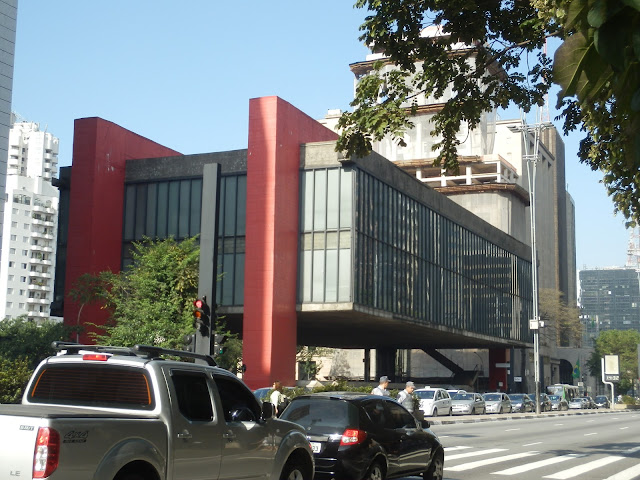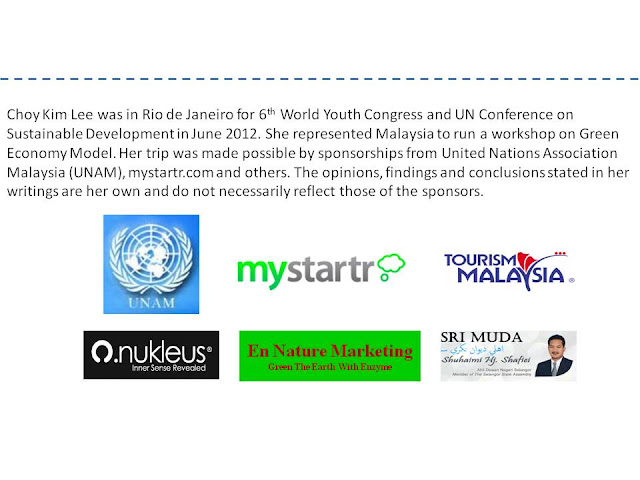Choy Kim Lee stands up for her planet
BY NATALIE HENG
star2green@thestar.com
One youth stands up for her planet.
AN APPRECIATION of nature comes easily for Choy Kim Lee, who grew up on cold showers straight from the well in the town of Malim Nawar, Perak. Life just seemed more integrated with the outdoors there, where people were green without even trying to be. Louvre windows and traditional skylight hatches allowed natural wind and sunlight into homes, while motorbikes and bicycles were common modes of transport in a landscape shaded by an abundance of greenery.
Choy left this idyllic life behind when she moved to the city in 2007, to pursue a degree in Biomedical Science. It was during her years at Universiti Malaya, a green enclave amidst the rush and traffic of Kuala Lumpur, that she came across a documentary that changed her life –Home by Yann Arthus-Bertrand, the 2009 feature movie which captured the Earth’s beauty and degradation, from the air.
 Doing more: Choy Kim Lee wants youths to be more vocal about conservation.
Doing more: Choy Kim Lee wants youths to be more vocal about conservation.
It convinced Choy that she should be part of something bigger. That is why attending the Rio+20 United Nations Conference on Sustainable Development in June was a big deal for her. From tree planting to hosting workshops on composting for local residents in Petaling Jaya, Selangor, the 24-year-old has been taking baby steps to care for the planet. But at Rio de Janeiro, Brazil, where the conference was held, she got to see how her efforts are amplified amidst similar initiatives by youths from all over, each trying to make a difference in their respective corner and all collectively making a difference across the world.
The sea of voices present at the World Youth Congress which she attended at Rio was in her words, “Huge”. Hearing how outspoken and certain of their position these youths were has inspired her to continue being involved in raising Malaysia’s environmental consciousness.
Lending a hand
Choy is a busy bee. She spends most of her time working as a part-time research assistant in the Department of Social and Preventive Health at Universiti Malaya’s Faculty of Medicine. In between, she sources for funds to do volunteer work. The list of affiliations on her name card include the Smile Action Team, a non-governmental organisation she helped establish, which offers free dental health care to orphans. Over the Hari Raya break last month, she flew to Cambodia to offer such help to children in need.
Then there is MyCorps, a platform for youths to participate in community welfare and humanitarian activities. She went to Lebanon with the group in March to work on a community development project for Palestinian refugees. Aside from her interest in humanitarian issues, what drives her is protection of the environment, which was why she joined the Malaysian Green and Blue Environment Protection Society back in 2010.
The group, which only has about 20 members, organises screenings of environmental films, exhibitions and other green-related events in an effort to increase green-literacy amongst city folk.
In addition to being active at the grassroots level, Choy feels that pushing for change at the policy level is equally important. Hence, she has been a participant of the Global Model United Nations Conference for the last couple of years. Last year, at the South Korea gathering, she learnt about negotiation policies on the topic of “How to advance human progress in harmony with nature”. Since then, she has joined the United Nations Association Malaysia (UNAM) Youth Circle. Later this year, she will be going to the United States for a workshop that will equip her and other Youth Circle members with the knowledge and training on how to host a Model United Nations Conference in Malaysia next year. It was also through UNAM’s sponsorship that she and a fellow active member of the group, Eng Khim Sheng, managed to make it to Rio.
Learning from Rio
Certain things struck Choy whilst she was in Rio. Aside from the assault on her senses from a bustling landscape filled with shanty towns, the human warmth – a local at a bus stop offered her a bed in their family home when all the hotels in town were fully booked – and the outspokenness of youths from around the world took some getting used to. Her experience at the World Youth Congress, which took place from June 4 to 13 was inspirational.
“Many of the youths have had more exposure in this kind of stuff (environmental issues). I was really impressed because they were so outspoken. They had opinions about things. The Asian participants were a lot quieter and didn’t seem to have their own stand.”
This is something Choy wants to change, about herself and other Malaysians. She thinks the lack of interest in green issues among youths here has to do with a lack of exposure, and she believes that teachers should encourage students to read about current global issues and be involved in extra-curricular activities and volunteerism.
Since returning from Rio, Choy has been busy leveraging on her contacts and affiliations to change things. Firstly, she has proposed to the Economic Planning Unit, which is running a post Rio+20 workshop next month, to include a youth representative.
She is also doing coordinating work for a post-Rio+20 stakeholders’ forum to be held in November, organised by UM Care, a loose volunteer group of like-minded individuals at Universiti Malaya, which she is a member of. At this gathering, people can voice their opinions on the country’s sustainable development programmes.
At the end of the year, UM Care will organise an environmental conference on various issues.
“People interested in water issues, for example, can run a workshop or discussion group on the subject and discuss what they want Universiti Malaya to do about it. All proposals and solutions will be compiled and submitted to the Chancellor or some other decision-making body.
“I think Malaysian youths should try to get more involved in things like this. Nowadays, it’s easy to explore the issues affecting the planet through the Internet. It doesn’t matter if you are studying or working on something unrelated to the environment. I did biomedical sciences, for example. I think there needs to be a sense of urgency (about the state of the planet) which will drive people to look up these issues and get involved in things outside of their every day lives.”






























